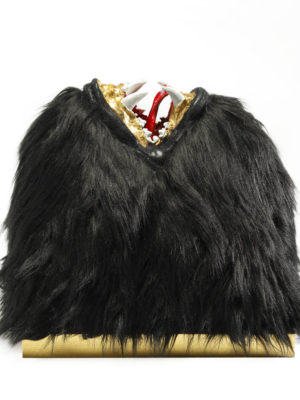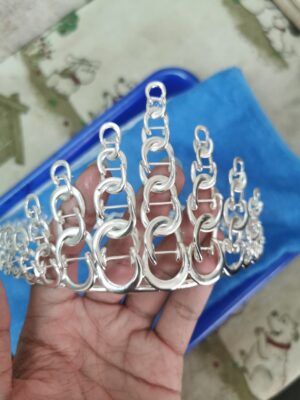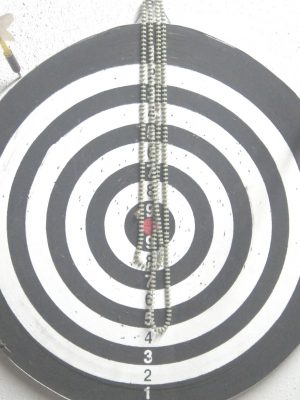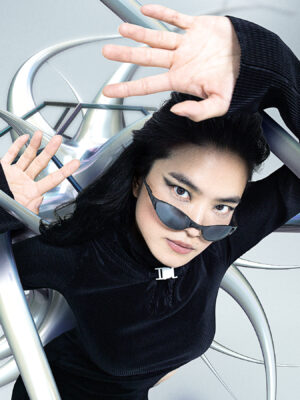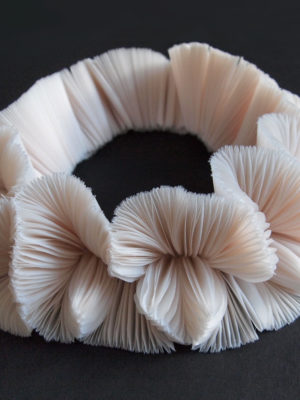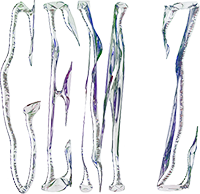Compared to his embellished and impeccably decorated stage pieces, these paintings are free of decoration, or the ‘aesthetic routine to make everything look beautiful’; they are washed in running water and laid out to dry for the sun burn all the excess away. This feels like an attempt to get to the core of things, to let go of the superfluous and ‘get real’. Will this pursuit continue in Coppens’ new line of work as the course director at Fashion Matters, Master Programme at the Sandberg Instituut in Amsterdam? We are curious to know how these new ideas currently circulating in Coppens’ art could influence him teaching alternative ways of creating fashion.
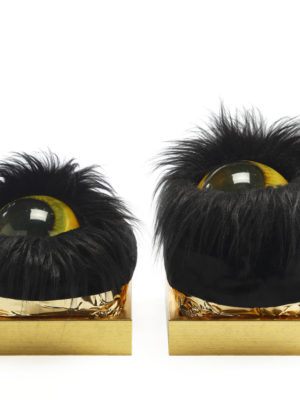
Marina Elenskaya:
What is your first memory of the future? When do you remember the first time thinking about it?
Christophe Coppens:
There’s an inner contradiction here. On a very personal level, when it comes to my work practice, I have never been very occupied with the future. Today and maybe tomorrow is what has always mattered the most to me. I am very much about the moment. I have always been. I never know what will be next until the new work is finished. And when it’s finished, I let it go, I never look back, I just move on.
I’ve always been very intuitive, never about the long run. This is not a very solid way to build a career, I know.
On the other hand, I think awareness is the most important. Being aware of the world we live in, people we live with and where we’re heading. Asking questions, understanding the changes that are happening. I am very curious of all things old and new. I’m a very hungry person.
As a kid I had two passions. Our attic was my studio, where I sculpted, painted, made costumes, wrote poetry and plays, and directed my cousins towards big family performances.
At that time I was determined to become an actor. So every day, after school I had acting classes, declamation lessons, poetry studies, classical ballet. That was my very clear idea of the future… until I found out I was not a very good actor. I always wanted to be in control, so I realised that I wanted to direct plays, but also design the sets and the costumes, the light, the sound…the whole package.
So after high school I studied theatre, until that day where I needed hats for the costumes I was making. A lovely 79-year-old hat maker showed me some tricks. And I came back for more every weekend for one year during my second year at the Brussels Conservatorium. At the end of that year I had a small collection. The Belgian magazine Marie Claire saw them and sent me off to Paris Fashion Week. That’s how I got started.
Along the way I always kept making artworks, since childhood, with my background in theatre and my newfound playground in fashion.
I was becoming an artist as a director, and it was all very organic, I always rolled from one thing into the other. I was always about producing, making, not about defining if it was fashion, design, art or performance. It was an unstoppable train.
Until it stopped, after the day I pulled the emergency brake. I would never be able make the art I wanted to make with the mentality of a designer and I certainly did not succeed in being a part-time artist. Since that day it has only been about my artwork. That was necessary, to be clear, mostly to myself. I needed closure.
Now after three years I feel I’m relaxing again, and anything is possible, I can do anything, as long as it is within this newfound mindset.
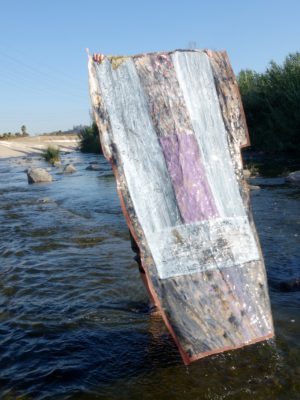
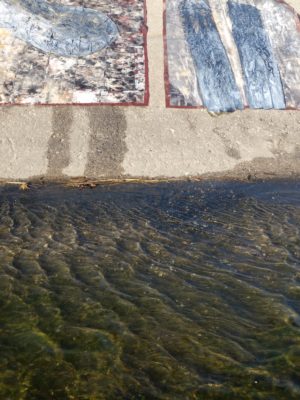
What are the aesthetics and the ethics of the future art practice?
When 90% of my time was fashion three years ago, I craved for in-depth work: silence, space to reflect, to take distance, and go slow. I needed two years to detox, to slow down, to stop the noise in my head. I also had to un-learn certain ways. In 21 years I had built a whole series of tricks I could always count on. There are still many traps for me out there.
In the process I had to learn, for example, how to avoid to end up in an aesthetic routine to make everything look beautiful, a habit that I picked up over the years and took me a while to get rid off. But I’m getting there step by step. I can now sit down and only think, without feeling guilty not doing anything. For once I also try to walk before I can run. I read a lot. Processing all that new information and at the same time working on a new body of work is the biggest challenge. I need to stop the mind so something bigger takes over.
My latest work is therefore very raw, almost tribal. Sun and water do half of the work. And it’s all about energies. It is the only way and it all comes very natural, you just have to have faith and it will flow.
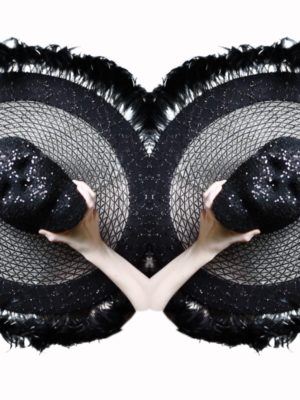
What are the tools and means of the future?
What is the fashion of the future?
It’s a bit ironic. I had no formal training in fashion and when I closed my fashion business in 2012, it was in a state of total defeat. I was tired of the struggle with finances, buyers, production, deadlines, market and demand. I left the industry with more questions than answers.
So when I was asked to become head of a new fashion Master’s programme at the Sandberg Instituut in Amsterdam, I had to think twice.
I worked in the trenches of fashion for two decades. I made all the mistakes in the book, and sure learned some lessons along the way. When I started 24 years ago, it was very simple: you made your work and showed it at one of the four fashion weeks, or you stayed at home and sold it in your living room. I saw many designers of my generation give up after a few years, most after losing large amounts of money. You had to be part of the system — there was no alternative.
Today, when I talk to some of our applicants to the master’s, it seems that this unappealing dynamic still exists — as if the battle is lost before it has even started.
Once you’re on the treadmill of the seasonal calendar, there is very little time and energy left to re-think or reflect — you just go on and on. Sustainability? Honestly, when you’re in the midst of it all and the rhythm is so high, you can barely breath. You are happy if your suppliers can deliver your materials on time, let alone turn everything over and make sure materials are produced in a decent way. There is simply no time for that. And how the hell are you going to fit in all these new ways of producing and new technologies in your current process? You just keep going.
Sure, a big part of the fashion industry works fine, and there are profitable companies where you can have an amazing career. But what if you want something else? What if you love fashion but don’t feel like you want to be part of this current system? What if you cannot find fashion within this industry? And what if you want to do everything your way, from the start, without compromising your beliefs?
Today, there is a new, smart generation that is very aware of how not to proceed. In their eyes, you cannot produce anything without full awareness — environmental, social and economical. It’s all part of the contemporary creating process. Anything less would be plain ignorant.
We’ve been talking for years about coming up with new ideas in this direction and making a difference, but we need more practice in the fashion education system. There are so many ways to function as a designer without losing yourself in the current system. And it’s up to the new generation to research and fine-tune their choices, look deeper into current options and develop forward-thinking models that put them at the forefront of a much-needed new wave of fashion.
I acknowledge that it’s easy to rant and be pessimistic about the fashion industry. Nowadays, a large part of it is based on producing and consuming gigantic amounts of clothing at impossibly low or extremely high prices. It is a system that seems hard to break into. How do you, as a designer, come up with innovative ways of designing, producing, promoting, financing, selling and eventually consuming? How do you meet the needs of today’s consumers and anticipate the needs of tomorrow’s world?
The two-year ‘Fashion Matters’ master’s programme aims to find answers to those questions. We have chosen to favour thorough research and critical thinking in a world that is dominated by search engines and instant communication. The focus is on the role that fashion and design play in culture and society, and ranges from environmental issues to economics and politics. Material plays a leading role: understanding its nature, origin and possibilities, both traditional and new. From industry-based to handcrafts and technology-based crafts. How can technology influence design and satisfy the consumer’s needs?
The programme leads students along the path from in-depth research and experimentation, to development and production. Although the final project can be a fashion collection, it can also be an innovative proposal or a study that is as far from the industrial model as the student wants it to be. Fashion is more than an industry, and making clothes is not always fashion. Be part of a fashion world and its essence, yet in a sustainable way that fits your talent and message, making use of all the new available technologies, while embracing your heritage and culture and the traditional crafts around you.
We formed a small team of teachers along with a group of guest speakers and influencers —designers, writers, artists, thinkers, curators— each of whom are experts in their own field. Possibilities to collaborate with institutions, companies and workshops are at the cornerstone of this course.
In two years’ time, we’ll know the results.
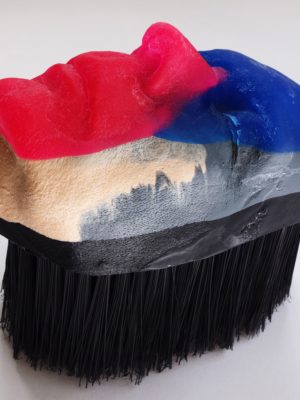
My relationship. I’m a firm believer in my partner Javier Barcala. In him and us.
What are your wildest dreams for the future?
The things that matter most are the people I love and the ability to work every day, in good health and with enough time to reflect. That’s what I have today. In that way my wildest dreams came true. I feel very privileged. Everything else is scale, economics and geography.
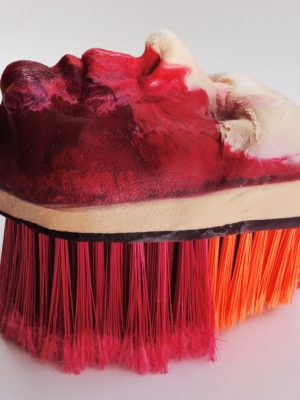
What are the cherished moments of the future?
Can you tell about your creative relationship with Róisín Murphy?
Róisín (Róisín Murphy, Irish singer-songwriter and one half of the electronic music duo Moloko – ed.) is special, very dear to me. I connected with her from that very first moment she showed up in my studio in 2007.
She bought some hats, ordered some. We stayed in touch and then I had sent her all these archive pieces and new stuff. She took them all on tour and wore them all.
After that she performed and sang in the video I made with Javier Barcala to show my collection Women Of the Fields.
She knew I was making masks these days. Then she went on tour again, after all those years, I was very excited for her. I sent her some masks, two weeks later some more, this time crafted on her after listening to the new album. Which by the way is amazing, this album is so layered and sophisticated. Talking about the future!
She never answers if I ask if she has any requests, she just let’s me work.
While I make pieces for her I just know they will work on stage. That she will pick them up, and know exactly what to do with them, and more. This collaboration has nothing to do with the usual performer-stylist-designer connection, where the stylist shops and proposes stuff. I really cherish this friendship, it is special, and I’m sure we’ll do more stuff in the near future.
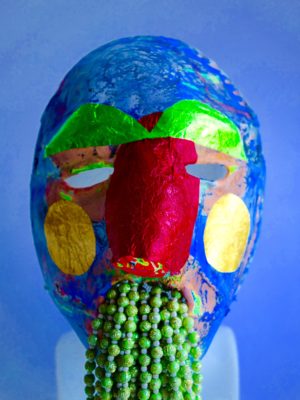
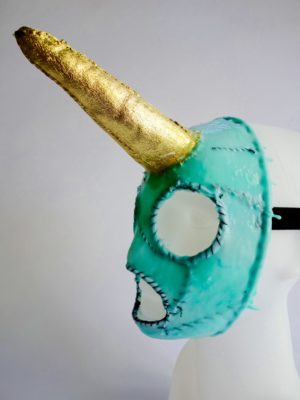
This article was first published in the #4 Supernatural Issue of Current Obsession Magazine, 2015
